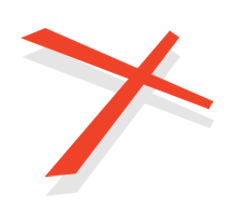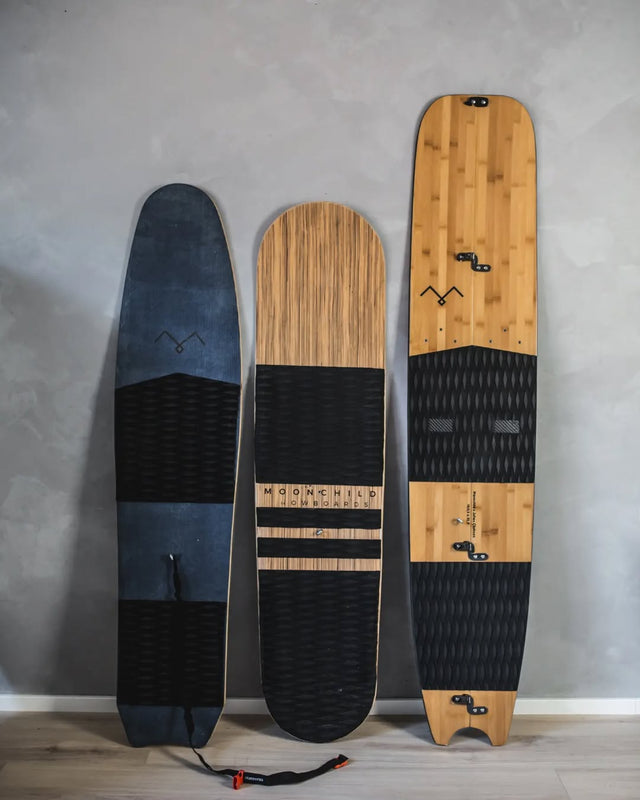02 The ultimate guide to picking the right powsurf
Powsurfing remains in the most appealing phase of any sport: its early years. This is when the most exciting evolution happens, history is made, and legends are born. During this time, the equipment evolves rapidly. Unlike snowboards, powsurfs are relatively simple to build, which has led to an explosion of home builders crafting their own boards in garages and small workshops. Naturally, big brands have also jumped on the trend, producing powsurfs of their own.
The real beauty of powsurfing lies in its diversity. Each home builder or brand approaches the design and construction of powsurfs differently. There are no hard rules yet about what a powsurf should be, which opens the door for limitless creativity. While snowboards follow a standardized construction—typically a wooden core wrapped in fiberglass, some carbon strips, a plastic base, and steel edges—powsurfs have no such limitations.
You can build a powsurf as simply as bending a piece of wood, attaching traction pads, waxing the base, and experimenting with shapes. Many home builders, particularly in Japan, are pushing the boundaries with beautifully crafted wooden powsurfs. Others are using snowboard-like construction, incorporating P-Tex bases for faster rides and increased durability. Some even take inspiration from surfboard construction, using foam cores and experimenting with more 3D shapes. For instance, Shredeye powsurfs have taken it to the next level with variable surf technology. There’s even a new brand, Paper Surf, making powsurfs out of recycled paper, proving that sustainability can be part of innovation.
In the video below you can see literally any material can be used in a powsurf. It is a powsurf with a real denim top sheet, a horizontally laminated wood core (skateboard style), and a P-Tex base.
Powsurfs come in a far greater variety of shapes than snowboards. They range from traditional designs to reverse sidecuts and are often just slightly shorter than regular snowboards. However, there are no rules—and boards as long as 180cm + also exist (Konvoi). Most powsurfs are solid boards, although a few brands have begun producing split powsurfs or even hybrid boards, like those from Moonchild and Cardiff Snowcraft. These can be ridden either as a powsurf or a snowboard with bindings.
Check out our award-winning Atlas Hybrid or [BLVCKBIRD] for an example of this. Both shown below.

Besides experimenting with shapes and materials, builders and brands are constantly innovating traction pads, finding ways to improve grip and control. Because powsurfing is still a niche sport, the diversity in designs and approaches is remarkable. Over the next few years, this diversity is likely to grow exponentially. While snowboards have become standardized, I believe the creative freedom in powsurfing will prevent that from happening. Home builders and smaller brands are simply too innovative to let it.
How to Choose the Right Powsurf for You
Since each brand or powsurf builder designs their powsurfs differently, it's advisable to consult with them regarding their shapes before making a purchase. Here are some key insights to consider when thinking about shapes:
-
For a Surf-Like Feel
If you prefer highly maneuverable boards and a ride that closely mimics surfing, opt for a powsurf with a flat base - similar to a snowboard or with really shallow channels. These boards may feature slightly spooned noses for smoother gliding and easier turn initiation, however, a 3D-shaped base isn’t really necessary for this style of powsurfing.
Boards without base channels excel in maneuverability, especially when equipped with a P-Tex base for superior glide, allowing you to ride on less steep terrain. A flat base is also the best option for split surfs, as boards with a flat surface will have the best traction.
Among flat-based boards, you can choose between a traditional sidecut or a reverse sidecut design. Reverse sidecut boards offer an even more surf-like feel, allowing you to pivot around the board’s widest point. However, they require at least 10–15 cm of powder, depending on the steepness of the terrain.
-
For Versatility in Shallow Powder
Boards with channels in the base are designed to engage edges even in shallow powder (as little as 5-10cm). or in more packed snow. They ride more like snowboards, feeling locked in, with a rail-like carving experience. These boards are great for longer, faster turns but may lack the surf-like looseness. Waxing and scraping the base can also be slightly more challenging. -
For Tricks and Freestyle
If you’re into skate-style tricks like shove-its or flips, consider a shorter, twin-shaped board with a tail kick. These boards are less directional and allow for technical maneuverability. -
For Big Mountain Riding
If you’re into big mountain terrain, consider a split powsurf or a hybrid board for skinning approaches. Otherwise, you’ll need snowshoes or approach skis, especially in deep powder. (Snowshoes are great for shorter distances or steeper terrain, but more on that next time.) The Atlas Hybrid is a versatile solution, allowing you to use it as a splitboard for hiking up, a powsurf in ideal conditions, and a snowboard in areas where powder is scarce.
Just as snowboarders have a quiver of boards for different conditions, you can do the same with powsurfs if you're passionate about it. With so much variety and innovation, powsurfing offers something for everyone—and its evolution is only beginning.



0 Comments
There are no comments for this article. Be the first one to leave a message!